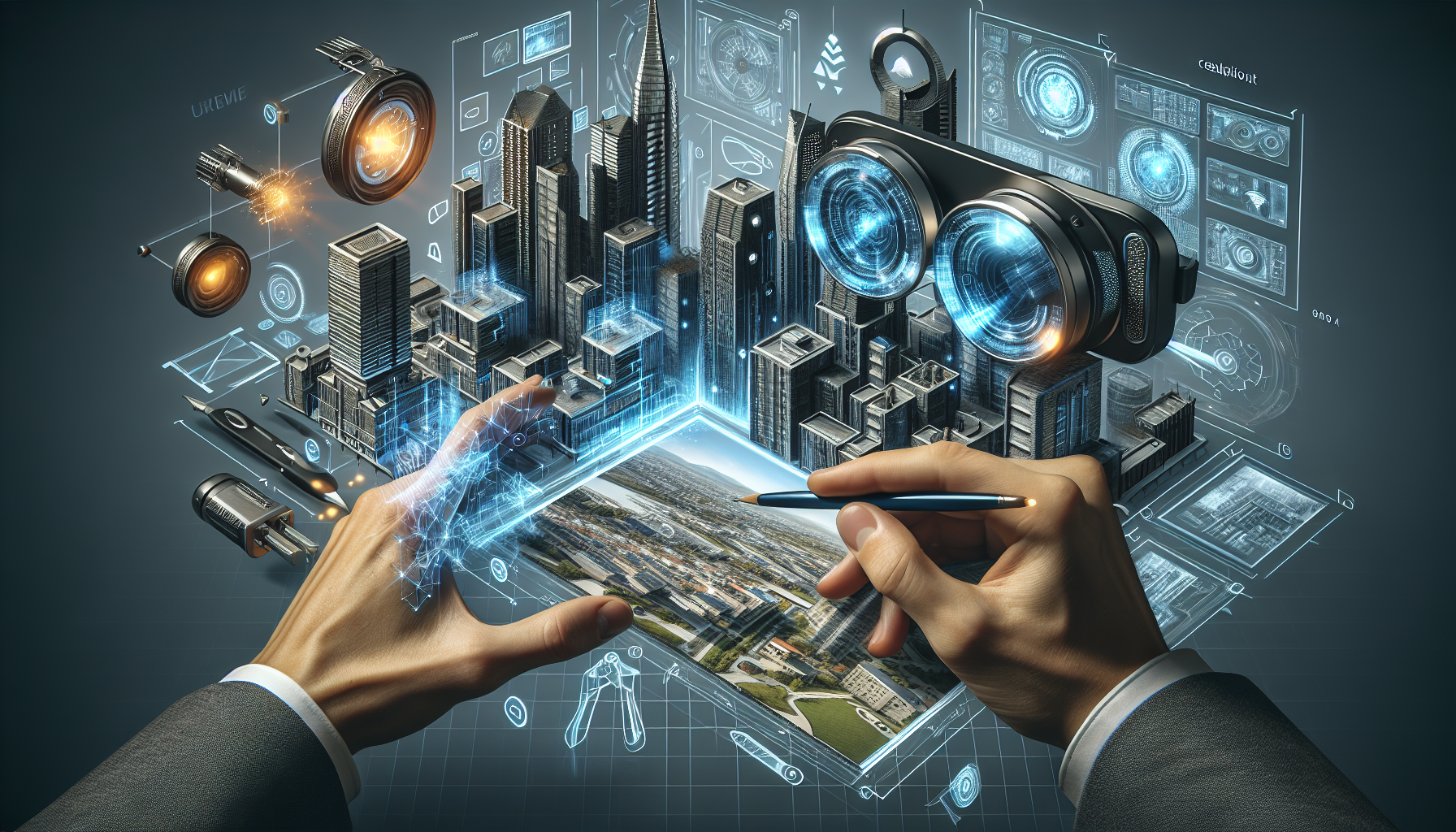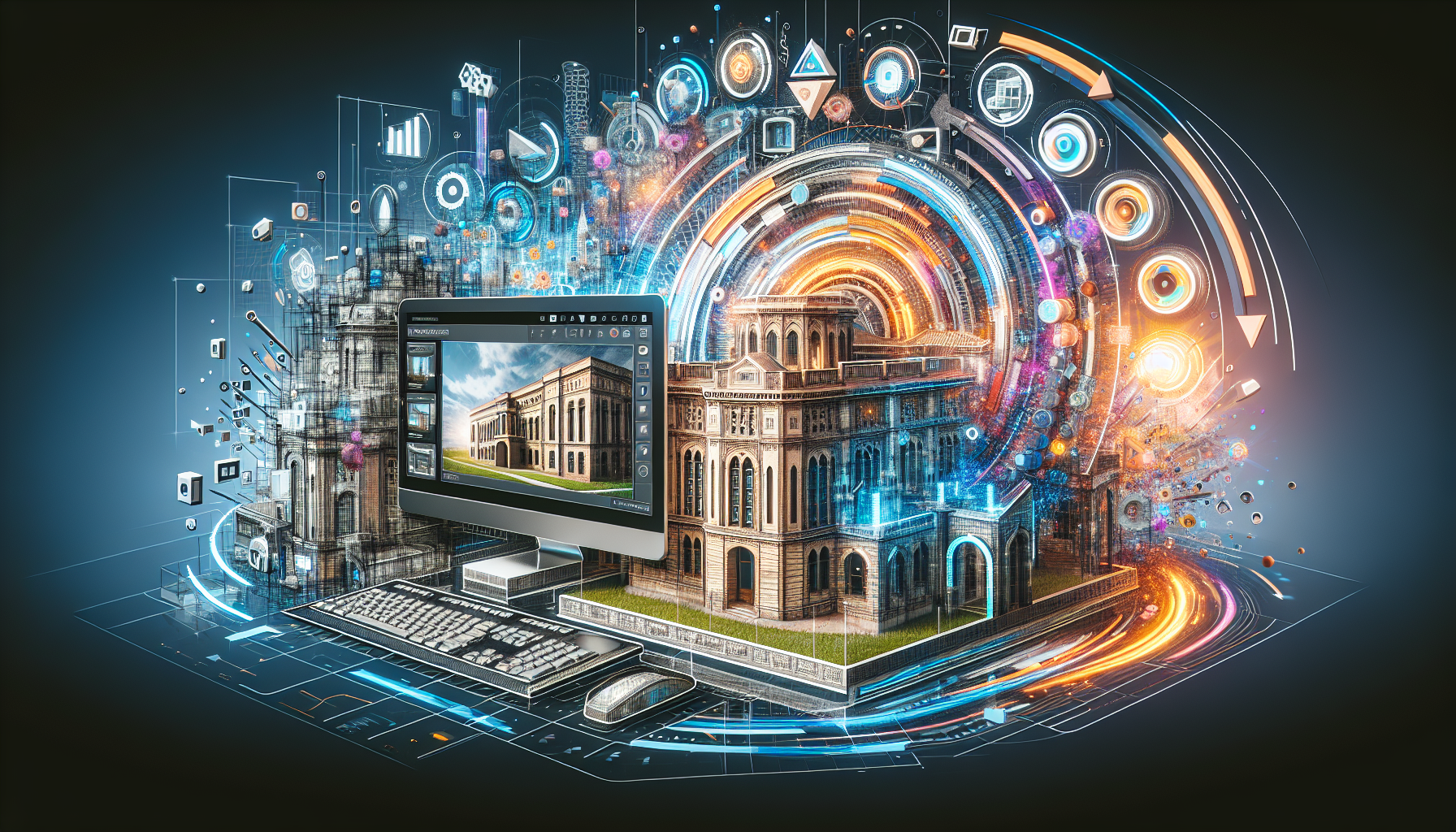In the realm of photography, particularly when it comes to architectural imagery, the year 2025 has brought innovative methods to post-processing. The focus of ‘Post-Processing Architectural Photos in 2025: Top Tips & Software for Perfect Edits’ is about enhancing both efficiency and precision. In Pakistan, where modern architecture meets ancient history, tools like Adobe Lightroom have transformed how local photographers highlight intricate details of structures. I recall my own experience, capturing the majestic Badshahi Mosque and later using advanced software to bring out its timeless grandeur. This blend of technology and tradition is reshaping how we preserve architectural beauty through photography.
Related: The Ultimate Guide to Architectural Photography in Pakistan: Capturing Heritage & Modern Marvels
Top Tips for Perfect Edits in Architectural Photography
Architectural photography is a revered art in Pakistan, where the blend of ancient and modern structures creates a visual feast. Here are some effective strategies to enhance your post-processing workflow and infuse creativity into your edits.
Understand Local Architectural Styles
When editing architectural photos, be mindful of the unique styles found in Pakistan, from the historic Mughal architecture to contemporary designs in cities like Karachi and Lahore. Tailoring your edits to highlight these styles can significantly enhance the final image.
Essential Tools for Precision
Investing in advanced software is crucial. Tools like `Adobe Lightroom` offer a range of features to adjust lighting, perspective, and clarity. These adjustments are particularly important in architectural photography to ensure the structures are depicted accurately.
Utilize Local Influences
Draw inspiration from local photographers and their use of light and shadow. The play of light across the sandstone of Lahore Fort, for example, is a classic case of how natural elements can be accentuated in post-processing.
Practical Tips for Efficient Editing
- Use presets for consistency across a series of images, especially when dealing with similar structures.
- Keep an eye on distortion. Utilize lens correction tools to maintain the integrity of architectural lines.
- Experiment with HDR techniques to capture the full range of details, balancing both shadow and highlight.
By integrating these strategies, you can refine your edits and showcase the architectural beauty of Pakistan with both precision and creativity. Remember, the goal is to enhance, not overshadow, the inherent beauty of these structures.
Best Software for Post-Processing Architectural Photos in 2025

In 2025, the art of post-processing architectural photos in Pakistan has been revolutionized by cutting-edge software, enhancing both creativity and efficiency. As a local photographer, I’ve found that the right tools can transform mundane images into captivating masterpieces. Here are some of the best software options that have become favorites among professionals in our region.
Adobe Lightroom
Adobe Lightroom remains a staple for many photographers. Its intuitive interface and powerful editing tools make it ideal for adjusting lighting, contrast, and color balance—essential for architectural photography. According to a report by Adobe, its latest updates have significantly improved workflow efficiency, a feature many local photographers appreciate.
Affinity Photo
Affinity Photo has gained popularity as a cost-effective alternative to more expensive software. It offers robust features similar to those of its competitors but at a fraction of the cost. Many students at National College of Arts use Affinity Photo for its advanced retouching capabilities and non-destructive editing processes.
Skylum Luminar
For those looking to infuse a bit of magic into their architectural shots, Skylum Luminar is an excellent choice. Its AI-powered tools help automate intricate editing tasks, allowing more time to focus on the creative aspects. In my experience, its sky replacement feature is particularly useful for those often dealing with the unpredictable weather in Lahore.
Choosing the right software can streamline your editing process and enhance your creative output. Whether you’re a seasoned professional or a budding photographer in Pakistan, these tools offer the precision and artistic flair needed for perfect edits in architectural photography.
Advanced Techniques for Post-Processing Architectural Photos in 2025
In 2025, the world of architectural photography in Pakistan has become more vibrant and innovative, thanks to cutting-edge post-processing techniques. With the blend of tradition and modernity, photographers here have embraced new methods to enhance their images. As a local photographer, I’ve seen how these techniques elevate our work, making buildings in Karachi or Lahore appear more majestic.
Utilizing AI Tools
Artificial Intelligence (AI) has revolutionized post-processing. Tools like Lightroom AI automatically adjust lighting and perspective, reducing manual editing time significantly. Imagine walking through the historic streets of Lahore, capturing intricate Mughal architecture, then letting AI bring out the finest details you might have missed. The speed and precision are truly remarkable.
Enhancing Textures and Colors
In Pakistan, architectural photography is not just about capturing structures but also textures and colors. Using advanced software to highlight these elements can transform an ordinary photo into an extraordinary piece. For instance, features in Photoshop 2025 allow you to enhance the vibrant hues of traditional tile work or the rustic charm of old brick buildings, making them pop with life.
Integration with Virtual Reality
Virtual Reality (VR) is another exciting frontier. By integrating VR with post-processing, viewers can experience a 360-degree view of iconic sites like Badshahi Mosque. This technique offers an immersive way to showcase architectural beauty, merging art with technology in unprecedented ways.
These innovations not only boost our creativity but also bring our rich architectural heritage to the global stage. As a photographer in Pakistan, these tools have transformed how I share our stories with the world.
Post-Processing Architectural Photos in 2025: Top Tips & Software for Perfect Edits

In 2025, the art of refining architectural images has evolved significantly, offering a blend of efficiency, precision, and creativity. For photographers in Pakistan, the journey from capturing a photo to the final polished image is both exciting and rewarding. Having spent countless nights editing photos of Lahore’s iconic Badshahi Mosque, I’ve found a few tips and tools indispensable for creating stunning visuals.
Essential Software for Architectural Photo Editing
Choosing the right software can make all the difference in achieving perfect edits. Here are some top picks:
- Adobe Lightroom: Known for its robust editing capabilities, Lightroom helps enhance architectural details with ease. The ability to manage large catalogs is a plus for professionals dealing with extensive projects.
- Skylum Luminar: Its AI-driven tools simplify complex edits, making it a favorite for those looking to save time without compromising on quality. I’ve personally used it to bring out the intricate patterns of traditional Pakistani architecture.
- Affinity Photo: This is a cost-effective alternative with powerful features that rival more expensive options. It’s particularly popular among beginners and seasoned photographers alike.
Top Tips for Perfect Edits
Here are some strategies to enhance your architectural photos:
- Correct Perspective: Use perspective tools to ensure lines are straight and proportions are accurate. This is crucial for architectural photography.
- Enhance Details: Highlight textures and patterns unique to Pakistani architecture. This adds depth and interest to your images.
- Use Presets: Save time with well-crafted presets that match the aesthetic of your project. This is especially useful when working with large batches of photos.
Ultimately, the key to mastering post-processing lies in practice and experimentation. By combining cutting-edge tools with a keen eye for detail, you can transform your architectural images into breathtaking masterpieces. For more insights, consider exploring resources from National College of Arts or Photographers' Guild of Pakistan.
Conclusion
The journey of post-processing architectural photos in 2025 is as much about embracing efficiency as it is about unleashing your creativity. With the rapidly evolving tools and techniques at our disposal, photographers in Pakistan have more opportunities than ever to bring their visions to life. Reflecting on my own experiences, I recall how the introduction of advanced tools like `Adobe Lightroom` transformed my workflow. It allowed me to make precise adjustments that would have taken hours manually.
Key Takeaways for Effective Post-Processing
To navigate this digital landscape, consider these pivotal points:
- Leverage AI-powered tools to reduce time spent on repetitive tasks.
- Explore local workshops or online courses offered by platforms like `Skillshare` to refine your skills.
- Balance technical enhancement with artistic expression for a unique signature style.
Remember, the essence of architectural photography lies in capturing the soul of structures. Whether it’s the majestic Badshahi Mosque or the intricate details of a modern skyscraper in Karachi, post-processing should enhance, not overshadow, these marvels. As you delve into the realm of architectural imagery, remain open to learning and experimenting. The landscape of technology and creativity is ever-changing, much like the vibrant cities around us.
In conclusion, as we embrace 2025, let us harness these advancements to not only elevate our craft but also to tell compelling stories of the architectural wonders that define Pakistan. Keep experimenting and let your imagination guide you to new horizons.
Frequently Asked Questions
What are the best software tools for post-processing architectural photos in 2025?
In 2025, the leading software tools for post-processing architectural photos include Adobe Photoshop and Lightroom for their comprehensive editing capabilities, Lumion for its advanced rendering features, and Capture One for its superior color grading and tethering options. AI-driven tools like Skylum Luminar Neo are also gaining popularity for their ability to automate routine tasks and enhance workflow efficiency.
How can AI enhance the efficiency of post-processing architectural photos?
AI technology significantly boosts efficiency in post-processing architectural photos by automating repetitive tasks such as noise reduction, color correction, and object removal. AI-powered tools can quickly analyze images and suggest edits, allowing photographers to focus on creative aspects rather than technical adjustments. This not only saves time but also ensures precision and consistency across projects.
What are the top tips for achieving precision in post-processing architectural photography?
To achieve precision in post-processing architectural photography, start by using non-destructive editing techniques to preserve the original image quality. Utilize advanced masking tools to isolate specific elements, and employ perspective correction features to maintain the integrity of architectural lines. Additionally, leveraging high dynamic range (HDR) processing can help capture the full spectrum of light and detail in your images.


Leave a Reply